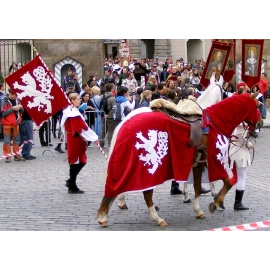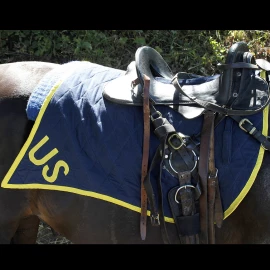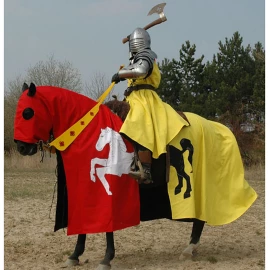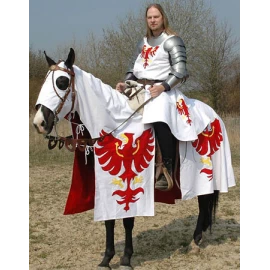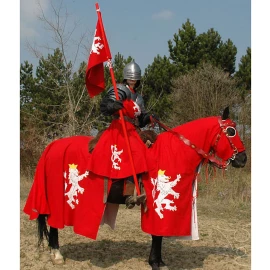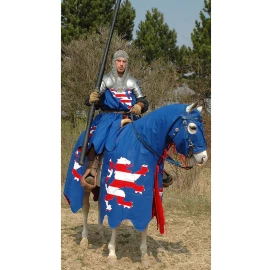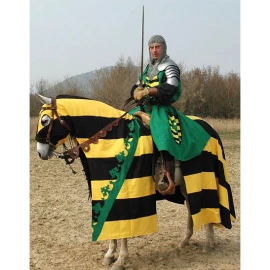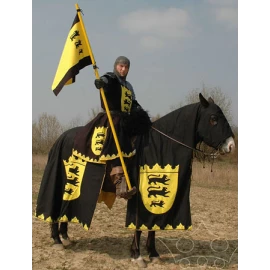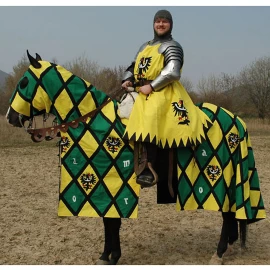Horse Trappers and Caparisons
Filter products
Horse Trappers and Caparisons
Trapper or Caparison is medieval horse blanket (also called shabraque), which is a saddlecloth used by medieval knights taking part in medieval hose tournaments. Tournamentsand hastiludes began in the eleventh century as both a sport and to provide training for battle. Usually taking the form of a melee, the participants used the horses, armour and weapons of war. The sport of jousting grew out of the tournament and, by the fifteenth century, the art of tilting became quite sophisticated. In the process, the pageantry and specialization became less war-like, perhaps because of the knight's changing role in war.
In the Middle Ages, caparisons were part of the horse armour known as barding, which was worn during war or tournament. They were adopted in the twelfth century in response to conditions of campaigning in the Crusades. An early depiction of a knight's horse wearing a caparison may be seen on the small Carlton-in-Lindrick knight figurine from the late 12th century. Modern re-enactment tests have shown that a loose caparison protects the horse reasonably well against arrows, especially if combined with a gambeson-like undercloth underneath.

